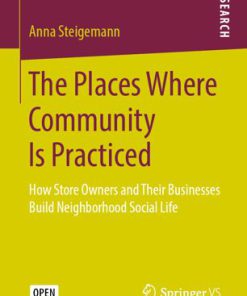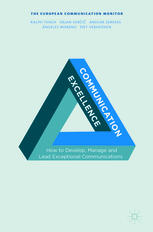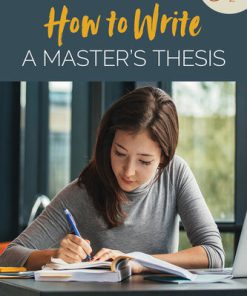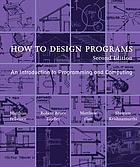Places of Excellence How Master Programs Build Reputability 1st Edition by Martin Trondle, Johanna Schindler ISBN 3658332832 9783658332839
$50.00 Original price was: $50.00.$25.00Current price is: $25.00.
Places of Excellence How Master’s Programs Build Reputability 1st Edition by Martin Trondle, Johanna Schindler – Ebook PDF Instant Download/Delivery: 3658332832, 9783658332839
Full download Places of Excellence How Master’s Programs Build Reputability 1st Edition after payment
Product details:
ISBN 10: 3658332832
ISBN 13: 9783658332839
Author: Martin Trondle, Johanna Schindler
This book investigates how excellence and reputability are formed, performed, and perceived at well renowned international higher education institutions. Along six detailed ethnographic case descriptions – including University of Warwick, Goldsmiths, New York University, School of the Art Institute Chicago, Ohio State University, and HEC Montréal – it asks how master’s programs in arts management and cultural policy achieved reputability and how this affects the everyday academic live. A cross-case analysis revealed a set of overall drivers that seem to have a great impact on the reputation of the studied programs. By focusing on the design and content of the teaching environments as well as on motivational, emotional, and social aspects of the learning situation at these six higher education institutions, the book offers a holistic understanding of reputability and excellence.
Places of Excellence How Master’s Programs Build Reputability 1st Table of contents:
1 Excellence and reputation in higher education: What is it about?
Rankings
Reputation
Teaching and learning environments
Hurdles for ethnographic studies in higher education research
References
Notes
2 Research setting and methods
Case selection
Data collection: Observation, field notes, and interviews
Data analysis
A note on ethnographical research
References
Notes
3 Notes from the field
3.1 University of Warwick: Master of Arts in International Cultural Policy and Management
University of Warwick
Centre for Cultural Policy Studies
Embedding: “It is a very entrepreneurial culture”
Ethos: “The whole of the center is developed around the problem of theory and practice”
Being a pioneer by forming the field
Professors’ profiles
Curriculum: “Our MA courses have been built around the needs of students”
Student profiles
In class
Conclusion
Notes
Appendix WW
3.2 Goldsmiths, University of London: Masters offered by the Institute for Creative and Cultural Ent
Evolution: “We had to compete with them to grow”
Curriculum: “Disaggregation” and “differentiation”
Financial resources: High-output, low-cost model
Exploring the Goldsmiths campus
In class
Class evaluations and evaluation practices
Students’ perspectives
Disposition: “We are creative and radical and we are going to change the world”
Professors’ profiles
Why Goldsmiths?
Conclusion
Notes
Appendix GS
3.3 School of the Art Institute of Chicago: Master of Arts in Arts Administration and Policy
Urban environment: The city of Chicago
Ideology and self-conception: “This program is based on critical thinking about arts ecologies”
Uniqueness: “Being in an art school is very, very significant”
Professors’ profiles
Architectural environment
In class
Internal environment: “It’s kind of being in a bubble here”
Networking, visibility, and self-organization
Conclusion
Notes
Appendix SAIC
3.4 Ohio State University: Master of Arts in Arts Policy and Administration
Local embedding: The city of Columbus
Ohio State University: “I knew that the university had a lot of opportunities”
Department of Arts Administration, Education and Policy: Community development is at its heart
In class
Professors’ profiles
Strategic use of resources
Student profiles and perspectives
Conclusion
Notes
Appendix OSU
3.5 New York University: Master of Arts in Visual Arts Administration and Master of Arts in Performi
Location: “New York City makes it different”
Program in response to the field
Curriculum: Business combined with practice
In class
Idea of success
Reputation: “The brand of NYU helps you”
Networking: “I am in New York, I can get the best people”
Professors’ profiles
The students’ image
Atmosphere
Conclusion
Notes
Appendix NYU
3.6 HEC Montréal: Master of Management in International Arts Management
Specificity: Marketing and arts management
Professors’ profiles
Aims and scopes
Teaching methods
Student body
Publish or perish?
The right topic at the right time
Networking and visibility
In marketing terms: Launching a new product
The environment of the program
Organizational culture: “We are expected to make profit”
Management
Conclusion
Notes
Appendix HEC
3.7 Excursus: Quantitative results from the questionnaires
What drives students to choose a program?
Professors’ qualifications and capacities
How are the teaching units experienced?
How is the time at university experienced?
Professors’ working time
The effect of teaching units on the experience of the time spent at university
Atmosphere among the professors and the students
Relationship between students and professors: Wavelength, concerns, and the will to change
Conclusion
Notes
4 Analyzing the cases: Drivers to excellence and reputation
Summing up the seven cases
Similarities and patterns in building a reputation
Conclusion: Driving toward reputation and excellence
People also search for Places of Excellence How Master’s Programs Build Reputability 1st:
places of excellence how master s programs
master of excel certification
centre of excellence master herbalist
center of excellence programs
center of excellence in higher education
Tags:
Martin Trondle,Johanna Schindler,Places of Excellence,Programs,Reputability
You may also like…
Politics & Philosophy
Education Studies & Teaching - School Education & Teaching
Business & Economics - Management & Leadership
Uncategorized
Computers - Programming
Romance - Contemporary Romance
Business & Economics - Management & Leadership
Business & Economics - Management & Leadership













